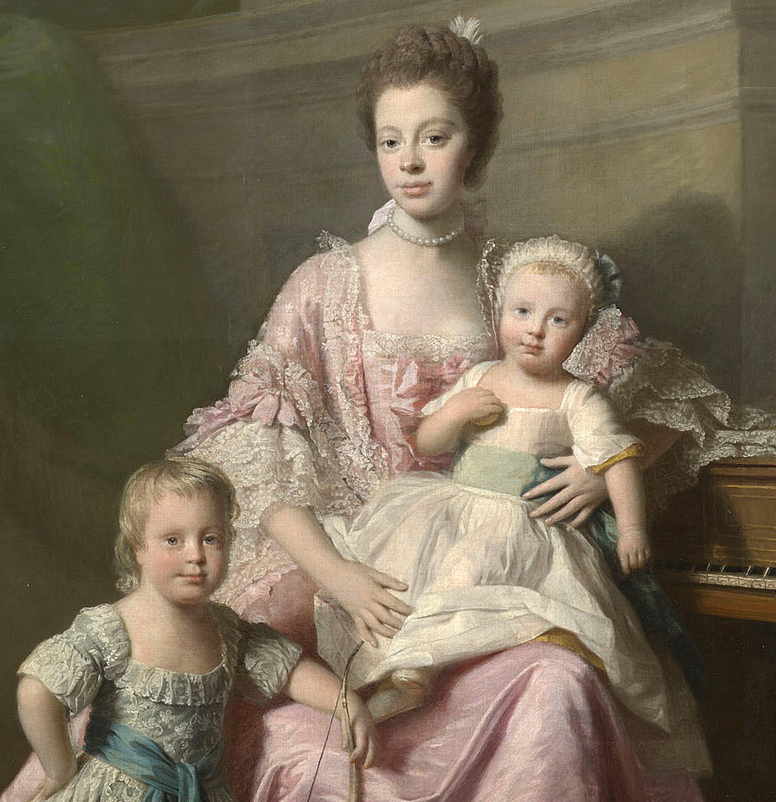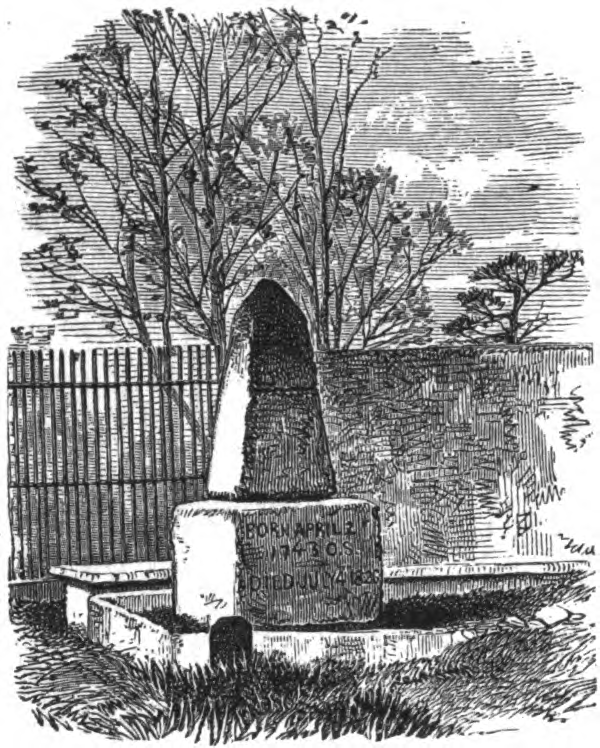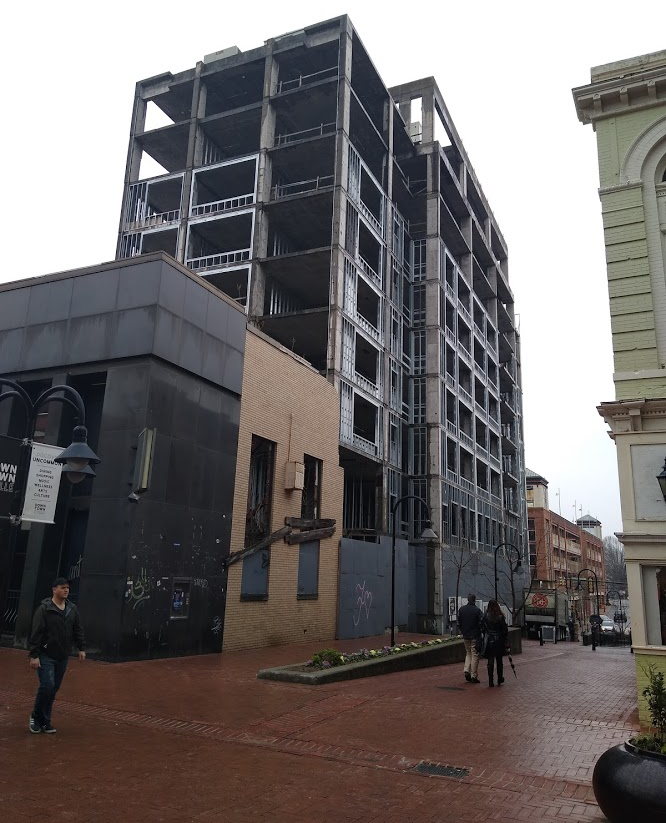
Queen Charlotte, wife of George III, with Prince Frederick and Prince George (who succeeded to the throne as George IV)
Source: Royal Collection Trust, Queen Charlotte (1744-1818) with her two Eldest Sons (c.1764-9)

Queen Charlotte, wife of George III, with Prince Frederick and Prince George (who succeeded to the throne as George IV)
Source: Royal Collection Trust, Queen Charlotte (1744-1818) with her two Eldest Sons (c.1764-9)
Charlottesville was named after Queen Charlotte, the wife of George III.
Her ancestors included Margarita de Castro y Sousa, a member of the Portuguese royalty and an African-born mistress of King Alfonso III. Prince Harry's engagement in 2017 to Meghan Markle, whose father was black and mother was white, may not have been the first time a member of the royal family decided to marry a mixed-race spouse. Queen Charlotte's heritage has led a former Charlottesville mayor to ask "Was Queen Charlotte, our city's namesake, black?"1
Charlottesville was, very briefly, the capital of Virginia. The General Assembly met there between May 28-June 4, 1781. Governor Thomas Jefferson and the legislators fled from Richmond to Charlottesville after the British marched a second time towards the state capital, but going to the base of the Blue Ridge was not far enough to ensure security.
Lieutenant Colonel Banastre Tarleton led his British cavalry from Louisa to Charlottesville, arriving on June 4. A just-in-time warning after an all night ride by Jack Jouette allowed nearly all of the state officials to escape. The General Assembly met again in Staunton, and then adjourned back to Richmond.2

the monument at Thomas Jefferson's tomb, 1881
Source: "The Chesapeake & Ohio Railway Directory, Containing an Illustrated History and Description of the Road," Tomb of Jefferson (p.240)
The Downtown Mall has a distinctive, unfinished eyesore. The developer largely responsible for the Downtown Mall revitalization bought the property at the corner of 2nd Street and East Main Street in 2000. Groundbreaking for a planned 9-story luxury hotel called The Landmark was held in 2008, but the banking financing the project failed in the Great Recession. Construction stopped in January, 2009.
A new developer, John Dewberry, gained control in 2012. He proposed building a hotel instead of apartments and renamed the project as the Dewberry Hotel, then the Laramore and then Dewberry Living - but no work was done to complete the building after 2012. Though the incomplete building was a visual blight and failed to generate potential tax revenues, frustrated city officials decided not to help finance completion or to force the developer to do more than secure the skeletal framework from vandalism. The city spokesperson said in 2020:3

the building started in 2008 as the Landmark Hotel was still unfinished in 2020

Charlottesville in 1878
Source: David Rumsey Map Collection, OW Gray & Son Atlas - Gray's New Map of Charlottesville, Virginia (1878)

the developer briefly proposed to name the structure "The Larramore"
Source: Dewberry Group, Dewberry Living

Thomas Jefferson arranged for Virginia's second state-supported university to be constructed in Charlottesville
Source: Library of Congress, View of the University of Virginia, Charlottesville & Monticello, taken from Lewis Mountain (1856)